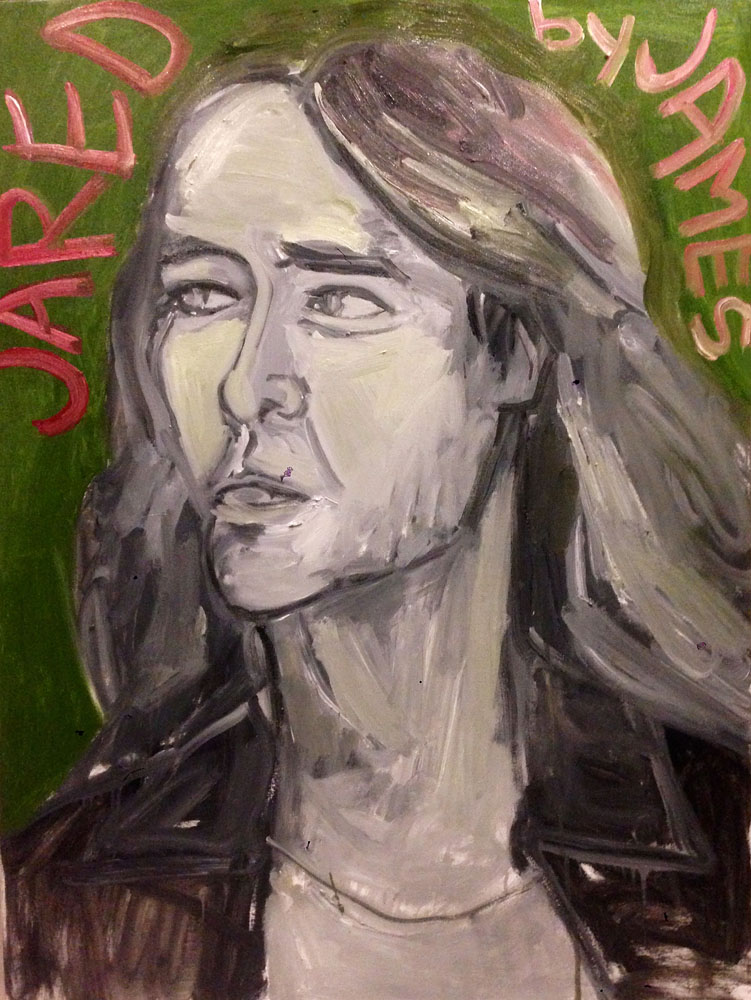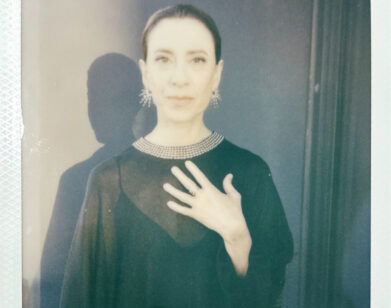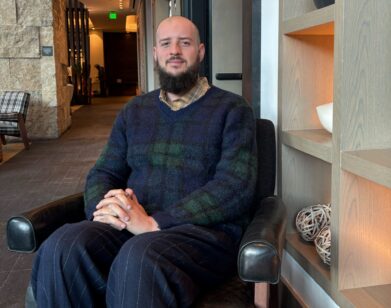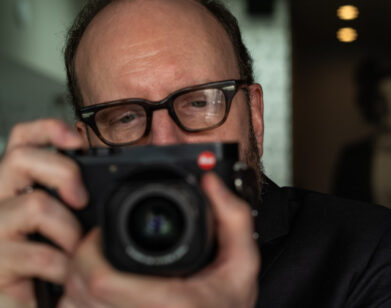Jared Leto
I did start to question what i had to offer as an actor. I don’t think i considered myself a very good actor or to have much to offer during that time. Jared Leto
If you were surprised at all by Jared Leto’s performance in Jean-Marc Vallée‘s Dallas Buyers Club, then you both shouldn’t have been and are not alone. The film, which is set in the mid-1980s, tells the real-life story of Ron Woodroof (played by Matthew McConaughey), a hard-living, rodeo-riding, hetero- and hyper-sexual electrician who contracts HIV. After being abandoned by his friends and given a 30-day death sentence by his doctors, Woodruff embarks on a mission to procure drugs and other alternative treatments from Mexico for himself and a group of other patients. Among them, is Rayon, a waxed and plucked transsexual fellow AIDS patient played by Leto, who becomes Woodroof’s unlikely confidante and business partner. Leto’s work in the film—funny, sensitive, heartbreaking—has drawn not just praise, but gasps and whispers and all manner of suddenly awakening ticks and noises. The shock and awe has been amplified by the fact that Rayon is his first role in a film in nearly five years, an extended period of self-imposed sabbatical, precipitated by what Leto felt was his growing disenchantment with acting, Hollywood-style-which, if you’re Jared Leto, you’d have had good reason to find embittering.
Up until recently, Leto—who is, amazingly, now 42—was probably best known, to greater and lesser extents, for three things: playing Angela Chase’s grungily mopey and quasi-illiterate love interest/obsession Jordan Catalano on the short-lived but forever-beloved mid-’90s TV series My So-Called Life, a subject that he no longer likes to broach; his dark, shuttering performance in Darren Aronofsky’s adaptation of Hubert Selby Jr.’s addiction epic Requiem for a Dream (2000), which he will happily speak about freely; and fronting the spacey, emotive, Los Angeles rock band Thirty Seconds to Mars, in which he plays alongside his older brother Shannon.
Leto, though, should probably be known for three other things: his tenacity, his sticktoitiveness, and his grit. After My So-Called Life ended, he was already in his twenties, and understandably blanched at the idea of falling into a teen-hearthrob-y groove. Instead, he decided to patiently and diligently work to prove that he had more to offer—which he did, forgoing adolescent schlock in favor of starring in Prefontaine (1997), a biopic about Olympic runner Steve Prefontaine, and taking smaller parts in projects by filmmmakers like Terrence Malick (The Thin Red Line, 1998), James Mangold (Girl, Interrupted, 1999), David Fincher (Fight Club, 1999, and later, Panic Room, 2002), and Mary Harron (American Psycho, 2000), all of which led up to Requiem for a Dream. Around the same period, he also started Thirty Seconds to Mars at a moment when actors having bands was beginning to become a thing—and not necessarily one that was viewed charitably (if you want to get a sense of the environment back then, Google “Keanu” and “Dogstar”). It drew the wrong kind of focus—an actor with rock star dreams, in a field that was increasingly filling up with them (also Google “Crowe” and “Thirty Odd Foot of Grunts”). Leto, though, didn’t buckle—or even bend—under the cultural pressure. He just kept writing songs and playing shows and, almost surreptitiously, became a kind of rock star—to the extent that Thirty Seconds to Mars has now released four albums that have collectively sold more than 10 million copies worldwide, and the group plays to packed stadiums around the globe. And when other opportunities to do the kind of work that he wanted to do as an actor proved scarce (mostly, because they are in general), Leto made do with the best available options, working with Oliver Stone on Alexander (2004), gaining a substantial amount of weight to play Mark David Chapman in Chapter 27 (2007), and taking on the role of a 118-year-old man in Jaco Van Dormael’s sci-fi drama Mr. Nobody (2009), and then simply, quietly, quickly decided to walk away until the right thing came along—which turned out to take nearly half a decade, when the script for Dallas Buyers Club floated into his orbit.
James Franco recently caught up by phone with Leto, who was on tour with Thirty Seconds to Mars in Portugal, to discuss his return to acting with Dallas Buyers Club, why he stopped in the first place, and where it all comes from. This being an art issue, Franco also volunteered to paint Leto’s portrait, which he did the morning after their interview and which we’ve included here as an added piece of extra-special bonus material—and like Leto himself, it’s a work of remarkable character and depth.
JAMES FRANCO: Last time we spoke, you were on tour. Are you still on the road?
JARED LETO: Yeah. I’m in Portugal now.
FRANCO: The Franco part of my family is from Portugal but I’ve never been there. Is it nice?
LETO: It’s a great place. It was kind of one of the early places in Europe that we actually had really big success in with Thirty Seconds to Mars, so it’s been a really special place for us.
FRANCO: Why do you think the band caught on there so early?
LETO: I don’t know. It was just one of those things that happened. But it’s nice that it happened in such a unique place. It happened in Portugal and the U.K., and then things grew from there for us in Europe. I love it here, though, man. You can take a drive and be in a totally different country, and there are so many things here that I never imagined I would see as a kid, so it just kind of blows my mind. We’re actually staying in a fortress that has been turned into a hotel overlooking the ocean. It’s just nuts.
FRANCO: It’s interesting that it doesn’t matter that you sing in English—that you can still go to places where English isn’t the first language and perform, and people will still get something from it. The fact that you’re singing in a language that they might not understand just doesn’t matter.
LETO: Yeah. With music, it doesn’t really seem to matter at all. You can play in China or Africa or the Middle East or Texas and still communicate. It’s one of those things that I love about music. I guess that visual art is sort of similar in it’s ability to communicate beyond language.
FRANCO: The first time I met you was probably about a year ago at Terry Richardson’s show at OHWOW in L.A.
LETO: Yup.
FRANCO: And I can’t remember how it came up because there were tons of people there, but I remember you saying to me in passing, “I’m doing music now. I’m not really acting.” And I said, “Why? Why would you stop?” And you said, “I didn’t really like acting that much, and I felt like I wasn’t that great of an actor.” Now, of course, you’ve come back to acting in such a strong way with your performance in Dallas Buyers Club. But what was going on around the time we met at that party? And what happened subsequently that made you want to do Dallas Buyers Club?
LETO: When I saw you back then, I hadn’t made a film in more than a few years. I think, all told, it was almost five years between films, and during that period, I had a lot of time to think about things. I was incredibly busy with Thirty Seconds to Mars. We’d had more success with the band than I’d ever dreamed was possible—we were playing arenas all over the world. It was an incredibly exciting time for the music—and still is. I mean, I’m in an arena in Portugal right now, about to play for 19,000 people. That’s not supposed to happen for a couple of kids from Louisiana on food stamps. So we were pursuing things with the band for many years, and I think, in the downtime away from movies, I did start to question what I had to offer as an actor. I don’t think that I considered myself to be a very good actor or to have much to offer during that time. But the five years away from film made me not only a better person, but a better actor. It gave me more confidence. I also think that art is really predicated upon the experiences that you’ve had in your life. You only have to share what you’ve consumed. We’ve certainly experienced quite a bit over the past five or six years, and I poured all of that into Dallas Buyers Club.
FRANCO: I’d imagine that during that five-year period you had other offers to do movies. So how did Dallas Buyers Club come to you, and why did you ultimately say yes to doing it?
LETO: Well, I have had other opportunities—and those are great to have. It’s always nice to be wanted. At first, people think you’re full of shit and you’re going to come back groveling or something. But after a few years, people start to get the point and then they just think you’re never going to do anything again. I hadn’t read a script in years—literally. But someone sent me this one for Dallas Buyers Club. I’d heard about it before—and I’d even ignored a few e-mails about it. But eventually, I took a look at it, and I just fell in love with the opportunity and the role. You know, I hadn’t made a film in five years—and I didn’t know if I was ever going to make a film again—but I do love film. I love performing. I love acting. I love editing. I love cinematography. I love so much about the process that I thought I owed it to myself to try it one more time to see what it would be like. So Dallas Buyers Club was really a test, in some ways, for me. I should also note that I’ve been behind the camera quite a bit in the past five or six years. I’ve been making documentaries, short films, music videos, and commercials and directing quite a bit. I’m surrounded by editors and shooters and making film all the time. So that part of things didn’t ever go out of my life. But the opportunity to bring this character to life was so compelling that I couldn’t say no. By the way, I saw you in a video store once before we actually met. I told you that, right? Remember the video store on La Brea and Melrose?
FRANCO: Oh, yeah. Rocket Video.
LETO: Yeah. We were just two dudes looking for a weird film or three. I saw you there because I used to live on Melrose and Citrus. I lived there for eight years in this 1,000-square-foot house I rented that had a little garage that I used to rehearse in. But I would walk down the alley there to Rocket Video.
FRANCO: Rocket Video was the place. Before Netflix, that was where you could get all the weird stuff.
LETO: By the way, I want to thank you again, for being a part of that piece that we did for “City of Angels.” It really turned out beautifully.
FRANCO: I heard it came out well. We should probably explain for people that I did an interview for you for this video for the Thirty Seconds to Mars song “City of Angels.”
slowly, i fell in love with L.a., and it has become a very special place for me . . . l.a. has given me everything. it helped me find what i needed. Jared Leto
LETO: Yeah. It was for this short film for the song we did—almost like a little documentary—about Los Angeles, dreams, art, and creativity. We got a bunch of interesting characters involved, including you and Kanye West and Lindsay Lohan and on and on. We premiered it at the Hollywood Bowl, which was kind of fun because there were 18,000 people there. It was really exciting and very moving. One of my crew guys—a really tough guy—was watching it from the side of the stage. I looked over at him and tears were streaming down his face. He said to me, “You know, that’s my story.” So it was pretty special.
FRANCO: Talk a bit about that song and how all of the different interviews and voices in the video worked into it.
LETO: Well, the song is about people coming to the City of Angels to live their dreams and to make their dreams their reality. It’s about how the other people they’ve met in the city have helped them—you know, a group of people all kind of joining together into a community of outsiders, of mavericks, of freaks, of artists. It’s about coming to a place to do something different and something special. I guess that guy on the crew had some kind of connection with that.
FRANCO: How did you wind up first coming out to Los Angeles? Were you doing both music and acting at the time? How did you make your way out there?
LETO: I was actually in art school. I was studying to be a painter. I started at the Corcoran College of Art and Design in Washington, D.C. And then I went to two other art schools after that, and ended up in New York City. I dropped out during my third year.
FRANCO: What kind of painting were you doing?
LETO: I was doing conceptual work. I was really into abstract and contemporary art. I always loved pop art as well. Then I fell in love with photography and filmmaking. I was also studying sculpture and exploring a lot of different things, as you do when you’re a student. But I ended up focusing on film during my third year. Not so much traditional, narrative film—more art film and video art. But then I dropped out because I thought I would have a better chance at directing a film if I got a job as an actor first. So that’s one of the reasons why I headed west with a backpack and a couple hundred bucks in my pocket. I went to California and ended up sleeping on the beach in Venice, and that was really the beginning for me. But I come from a visual background, and I grew up around a lot of hippies and artists. My mom and my brother and I moved around a lot. We basically moved every couple of years, and I went to a lot of different schools. But creativity, for us, was always a way of life. It was never a job. Being an artist was a passion and a way of life.
FRANCO: Why were you moving around so much?
LETO: I think it was just a product of the times. I’ve said this before, kind of as a joke, but it’s the truth: My mother crawled out of the muddy banks of the Mississippi with my brother and I in one hand and a fistful of food stamps in the other. I think the moving around was something out of the hippie-vagabond artist age as she searched for a better life for herself and her kids—you know, just kind of going where the road took her.
FRANCO: I’m trying to picture young Jared painting. You said that your work was abstract, but what were your early pieces like? Can you describe them?
LETO: Well, when I was younger and painting, I think I was in the process of finding out what it was that I had to say. Maybe that’s a question that never stops getting asked, but one of the reasons I moved away from painting and toward something else was because I eventually discovered that I wanted to deal more with motion, time, and performance—and that became a much bigger part of my life both as an actor and as a musician and someone who goes on stage and travels around the world and works on productions. But back then, things were much simpler for me, and more two-dimensional. I still had the kind of ambition I have now—and I certainly wasn’t too modest about what I wanted to attempt with art. But I wasn’t old enough or confident enough to develop a real style. So painting, for me, was more a case of exploration, and the pieces changed drastically as you explored and as you failed. And I think that’s a great period—that period of failure again and again and again, until you land on something. So that’s probably what my paintings looked like back then: like failure.
FRANCO: What were the films and videos like?
LETO: Impressionistic. [laughs] We would shoot all of our films on Bolex cameras that we had to check out of the university, and then once you shot your footage, you’d have to send out your film to the lab to be developed, and then, when it came back, you’d cut it with razor blades in the edit bay. This was pre-computer-editing software, so we did it all the old-fashioned way, and there’s something wonderful about that because you shoot and then discover that you’ve made a lot of mistakes. But some of those mistakes would turn out to be incredible—they’d be gifts—so you’d use them. It was certainly a pain in the ass as well—and very time-consuming and expensive. That’s why I think it’s great now that it’s so much cheaper and easier to make a film and distribute it. It doesn’t mean that it’s at all any easier to make something great, but the tools to make something and get it out into the world are certainly more available.
FRANCO: Do you still have any of those old films?
LETO: On a spool somewhere. Not even on VHS.
FRANCO: So right before you went to L.A. you were in New York?
LETO: Yeah. I was at the School of Visual Arts.
FRANCO: It seems like it would take a lot of will to say, “All right, I’m leaving all this behind and I’m going out to L.A.” Did you discuss it with anyone? I know that you work with your brother now in the band. Did you talk about it with him?
LETO: No. We’ve both had our own challenging days, and at the time, my brother wasn’t really around much. I do remember, though, it being a pretty big decision—especially to drop out and take a risk like that in your third year. But I also remember being very excited about it and making the choice and knowing that it was the right choice to make. I moved too fast—I always wanted more—and I couldn’t get that by staying in school. I had actually dropped out of high school, too, in the 10th grade, and I remember making that choice so clearly, too. It was confusing—and probably not a great choice to make—but I do remember the sense of freedom and the sense of excitement about things to come and the unknown in front of me.
FRANCO: So you dropped out of high school, but somehow you worked your way back so you could go to art school?
LETO: Yeah. I went to one of those high schools where you could do two years in one, so I caught back up—and then some.
FRANCO: This was in Louisiana?
LETO: In Washington, D.C. I always joke that Louisiana is a place that you escape, not a place that you leave. But it has actually changed a lot. Louisiana now isn’t the one that I was born into in the ’70s. That place was really challenging—especially for a single mom with two kids. Anyway, I eventually realized that if I finished high school and got the fuck out that way, then it would serve me much better than any of the other options I had. When I was applying to art school, I was turned down by NYU, though—I remember that very clearly.
FRANCO: What did you apply for?
LETO: I applied to the Tisch School of the Arts and got turned down. They sent me a rejection letter and said that I could go to normal NYU and maybe transfer, and I remember being pretty offended by that.
FRANCO: You haven’t mentioned music yet. Were you making music while you were doing all of this other stuff?
LETO: Yeah, the whole time. I think it’s really common for art-school kids to be in bands or making music—or creative people in general, I’ve found. A lot of the creative people that I grew up around did a bunch of different things, whether it was a visual artist making pottery or a performance artist who did sculpture. Most of them had to have other jobs as well in order to pay the rent, so people did things like graphic design work and painted signs. But music was always a part of my life—and then it became a bigger part as my brother came out to California and we continued to make music together.
FRANCO: My guess is that it’s probably important that you went to art school before coming to Hollywood because it’s more accepted in the art world that one can practice in many different mediums. In Hollywood—and maybe this is because film is such a large commercial medium and gets pulled into pop culture in a certain way—there is potential for a kind of skepticism when someone says, “I’m going to do this other thing as well because I’ve been doing it as long as I’ve been acting.” It’s a skepticism that I think exists because of celebrity.
LETO: It may even go back to the studio system days, that corporate, factory-line mentality of keeping people in a box so the boss has more control—you know, making sure that people are stuck in their positions so they don’t have more of a voice. But I think times have changed quite a bit for the better—and not just in terms of the entertainment world, but also the world and the culture in general. It’s more common now for people to have had many different jobs or careers by the time they’re 40. It’s more common now for people to explore a lot of different verticals in their lives. To me, that’s more interesting.
FRANCO: So tell me, then, about your arrival in L.A. Did you like it when you first arrived? And why did the acting take off first?
LETO: Well, California was always a magical place to me. I remember that there was a young kid who moved to my neighborhood when I was barely a teenager, and he was a star because he was from California and had a BMX bike and a skateboard and bleached blond hair. He was a god among kids just because he happened to be from this other place. When I was a kid, the world felt much bigger. You learned about California from television and film. When I was younger, I always thought of New York as the place that you went to become an artist. But then when I got into film, L.A. became the place. So when I finally went there, I was incredibly excited because I was pursuing my dreams. When I first landed, I do remember thinking, “What an ugly place.” The concrete sprawl seemed oppressive after coming from New York, where the energy and the people were infectious and inspiring. But I slowly fell in love with L.A., and it has become a very special place to me. I have the good fortune of leaving quite a bit, so I never get too comfortable, and I think I’m always very appreciative of what the city has done for me. L.A. has given me everything. It helped me find what I needed.
FRANCO: When you were interviewing me for the short film, I kept talking about My So-Called Life, and I understand you don’t like to talk about that—which is fine. But I do want to talk to you about one of my favorite movies, Requiem for a Dream. Where does that film sit in your story?
LETO: Requiem for a Dream was an incredibly important film for me. I auditioned for it about 6,000 times. Incredibly challenging, learned a lot, worked with a friend and filmmaker who I really admire. It’s an important part of my life.
FRANCO: I remember after seeing you in Requiem for a Dream, going, “Damn, Jared is a real actor.”
LETO: I think I had an opportunity to challenge myself and work with a talented group of people—just really wonderful actors in Jennifer Connelly, Ellen [Burstyn], Marlon [Wayans], who was phenomenal. We all felt like there was a possibility that we were doing something really special, and that’s the best feeling in the world. I certainly felt that way on Dallas Buyers Club, too.
FRANCO: So does this mean that you’re going to be doing more acting now? Or do we have to wait another five years?
LETO: [laughs] I have no idea. It’s an incredible thing to be able to do—to dream, to imagine, to make art in any way—and I would absolutely love to be able to find another film that I am as passionate about as Dallas Buyers Club. That would be a dream.
JAMES FRANCO IS AN ACTOR, ARTIST, AUTHOR, SCREENWRITER, DIRECTOR, AND THE PAINTER OF THE PORTRAIT OF JARED LETO THAT YOU SEE ON THIS ABOVE. HIS LATEST BOOK, ACTORS ANONYMOUS, IS OUT NOW.







